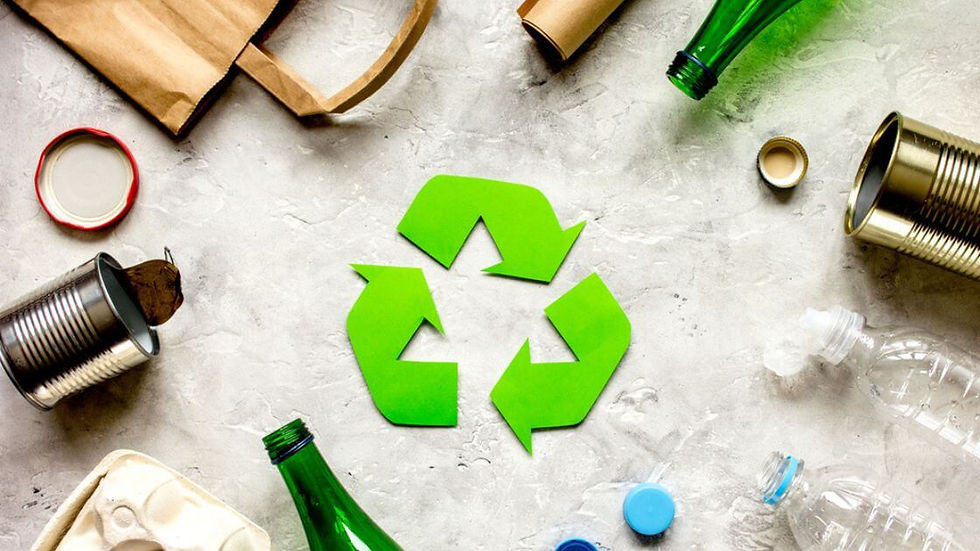15 Sustainable Manufacturing Examples and Case Studies
- Diversitech Team
- Mar 7, 2022
- 6 min read
Updated: Nov 17, 2023

The environment and society are intricately linked. This is something that companies have come to realize, with many now making efforts towards sustainable manufacturing as a way of ensuring both cost efficiency while meeting expectations from customers or investors alike, and local communities that could be impacted.
The environmental and economic benefits of green growth are becoming more well-known, with many businesses already taking important steps towards it. Their pioneering experiences show that this can go hand in hand for profitability as well as sustainability.
Sustainable Manufacturing Case Studies
Sustainability is the future, but many businesses have not yet leapt into this new era. They may be struggling with their short-term survival or cost pressure from clients and lack of knowledge on how best to invest in environmental improvement. It can also simply seem like an overwhelming task for those who are just starting out.
Related Article: Case Study: Taking Advantage of ODM Manufacturing
Here are some examples and brief case studies which will help show how this new approach has helped businesses save money in addition to improving their products or operations.

Gairdín, pronounced “Gar-Jean”, is the Gaelic Irish word for garden. They specialise in garden tools that are environmentally friendly, made from recycled and sustainable raw materials like Ocean-Bound Plastics and Algae-Blended Resin. Gairdin are a division of Diversitech Global comprising 20 years of industrial expertise in product design, manufacture and packaging. Find originality and innovation with sustainable materials always top-most in mind.
The Electrolux Green Spirit program made an impactful approach to reducing energy consumption and environmental impact. Their Kinston factory achieved this by running the processes as efficiently as possible, switching off all equipment when not in use, lowering the plant's demand for compressed air and installing motion sensors for lighting. And engaged engineering and maintenance personnel to find and repair a compressed air leak every day.
Using lean manufacturing and a value mapping process, their production processes and the layout of the company’s production area were analyzed and reviewed. They eliminated excess movement, materials, and extra tooling to help create a more streamlined product flow. The company reduced costs by 65%, increased production from 20 units per shift to 45 units per shift, reduced its production facility size by 73%, and reduced scrap rates from 24% to 1.8%.
Guardian Automotive is committed to reducing its environmental footprint. They have implemented a waste reduction program for them not only to be sustainable but also more efficient with resources. The company is now recycling among other materials unused glass cullet, fiberglass and scrap polyvinyl chloride. In 2005, the Ligonier Plant recycled more than 13,000 tons of waste and saved over $360,000.
When an investigation into the company’s chemical inventory and purchasing records revealed over 80 different chemicals on-site, a team from press operators to maintenance personnel got together for some brainstorming sessions to reduce inventory. Wasted ink was reduced by training employees to mix speciality colors from existing ink stocks. Furthermore, they came up with suggestions like modifying ventilation and air-conditioning efficiency to help improve worker health as well as greatly reduce energy costs.
To increase energy efficiency and improve their responsible business practices, Chrome Deposit Corporation embarked on an effort to develop new ways of doing things. By making simple changes like adjusting boiler settings and repairing minor gas line leakages, the company was able to cut its natural gas consumption by 12%. They also purchased two chillers which implemented a closed loop system for water use. This resulted in an 85% reduction in water usage.
Kennecott Utah has improved the energy efficiency of its refinery through the installation of a combined heat and power system. Their 6-megawatt system replaced power purchased from the coal-powered grid. It supplies more than half of the refinery’s total electricity needs and waste heat is recycled to make steam for turbines. Among deep reductions in emitted pollutants, CO2 emissions were reduced by 36,000 tonnes.

With serious consultation and recommendations, Besam targeted energy, waste, and productivity surveys. This included replacing metal halide lighting with fluorescent fixtures with occupancy sensors, installation of high-efficiency lamps and electronic ballasts, reducing compressor air pressure, and repair of compressed air leaks
Rapid-Line which fabricates and tooling for the manufacturing industry was experiencing a significant increase in their natural gas costs. Also, one of their customers encouraged them to get more involved with green practices. A new installation of ceiling fans and baffles made for better heating and cooling. Extra insulation, automated controls and reusing excess heat from the paint-line ovens boosted efficiencies and eliminated external furnace heating.
Isothane manufactures chemical products used for insulating and protecting constructions, buildings and civil engineering structures. New government legislation had been introduced with strict emission standards and to comply with flameproof manufacturing and storage standards. They spent two months researching less hazardous and flammable chemical alternatives. Substitute materials were found and old lines were discontinued. Solvent material use was greatly decreased and much less hazardous material was stored on-site.
Wausau Tile wanted to save money and use less natural raw materials while being environmentally conscious. The company believed that by using post-consumer/industrial glass chips, which is difficult and expensive to recycle, they could reduce their environmental impact and attract new customers with their decorative value. With the use of large glass chip aggregate, they were able to make their products attractive and architecturally pleasing, and have introduced it across whole product lines.
The company found that it could expand its market by selling more environmentally sustainable furniture products. Major changes were brought to its manufacturing plant. A vapour spray system reduced degreasing agents used on metal components. A 2000 gallon water tank reuses water for cooling equipment, and rainwater is collected for toilet flushing. Installed skylights brought in natural light for the benefit of indoor foliage plants that purify the indoor air. The company buys electricity from a hydro and wind power provider and has installed solar panels on the roof.
Intending to become more sustainable, the company began an assessment on its products and obtained third-party green certification for all floor cleaners, all-purpose cleaners, glass cleaners and bowl cleaners. Also, by updating packaging components, they reduced waste, disposal costs and shipping. In addition, they also found a buyer for one of their by-product materials. These steps made PortionPac attractive to large businesses, schools and hospitals as they had the sustainability credentials along with their potential for saving costs
In order to continue producing high-quality products with an environmentally-friendly mindset, S.C Johnson has developed their Greenlist system which ranks the environmental and health effects of ingredients used in its manufacturing process leading to the reformulation of many old favorites. After reviewing Saran Wrap usage, the company eliminated 4 million pounds of PVDC and reduced 1.8 million pounds of volatile organic compounds from its famous Windex product.
Honda is serious about sustainability. They have a Green Path program that targets reductions in the use of materials and scarce resources, developing products that are easier to recycle, and reduced water waste as well CO2 emissions during manufacture. Honda uses wind turbines at its Ohio plant to generate 10,000-megawatt hours of electricity per year. It also moves 80% of vehicles from plant to dealership by train, which has reduced CO2 emissions by over 60%.
Conclusion
So, what does this mean for sustainable manufacturers? It means that making a switch to producing sustainable products is not only the best thing to do for the environment, but it’s also a wise business decision. Consumers are more interested than ever in buying sustainable products and that trend is only going to continue.
Making the switch to sustainable manufacturing may seem daunting, but it’s important to remember that you’re not alone. There are plenty of resources and support systems in place to help you get started. And the best part is, making the right choice for your business and the environment can also be good for you.
See our article: Is it Really cheaper to manufacture in China

Many students today are turning to pay someone to take my online class for me to help manage their academic workload more efficiently. Best online class takers services handle homework, test questions, and even class discussions, providing expert support to maintain a balanced student schedule. By hiring a professional, students can ensure timely submissions and active participation without falling behind. This is especially beneficial for those juggling multiple courses or demanding jobs. However, it is crucial to choose a reputable provider who values academic integrity. When used wisely, these services can reduce stress and allow students to focus on other priorities without compromising their educational goals. With a proven track record of assisting over a thousand students—many of whom return for…
Due to its complexity and importance, accounting is a very challenging and challenging discipline, so students may find it difficult to complete their accounting homework on time if they do not have adequate subject-matter knowledge. The accounting process is time-consuming and labour-intensive. Accuracy and effectiveness require a thorough understanding of the concepts and ideas involved in accounting. If you prefer, you can pay someone to take my online accounting class for me. Without a thorough understanding of a topic, students may spend a considerable amount of time trying to find a solution, which makes it difficult to complete projects on time.
If you're confused about the SASSA grant process, this guide on srd reapplication is super helpful. It walks you through the steps clearly and ensures you don’t miss anything important. Definitely worth checking out if you're reapplying for the R350 grant.
15 sustainable manufacturing examples show how businesses reduce waste and energy use—similar to how Minecraft Pocket Edition encourages resourcefulness. In-game, players reuse materials, manage resources, and build efficiently, echoing real-world eco-friendly practices. These case studies inspire mindful creation, whether crafting in Minecraft PE or innovating in modern manufacturing.
Fifteen sustainable manufacturing examples showcase how innovation and eco-friendly practices can revolutionize industries—from renewable energy use to waste reduction. Similarly, GTA 6 for PC could benefit from optimized coding and energy-efficient performance, reducing the game’s carbon footprint. As manufacturing evolves sustainably, so too can game development, setting a greener standard for future digital experiences.